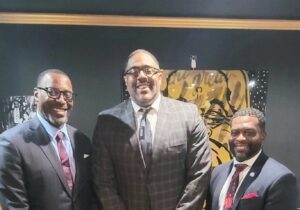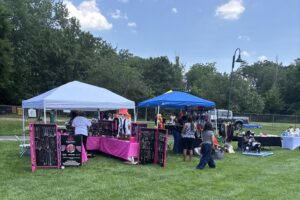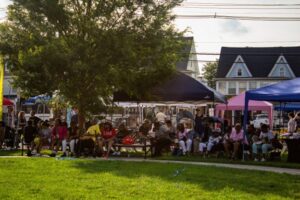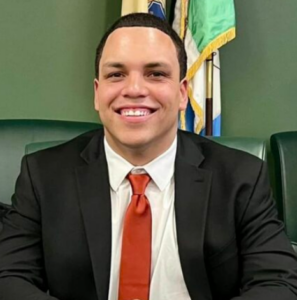PRESSING FORWARD: It’s Been Time To Uplift Our Institutions
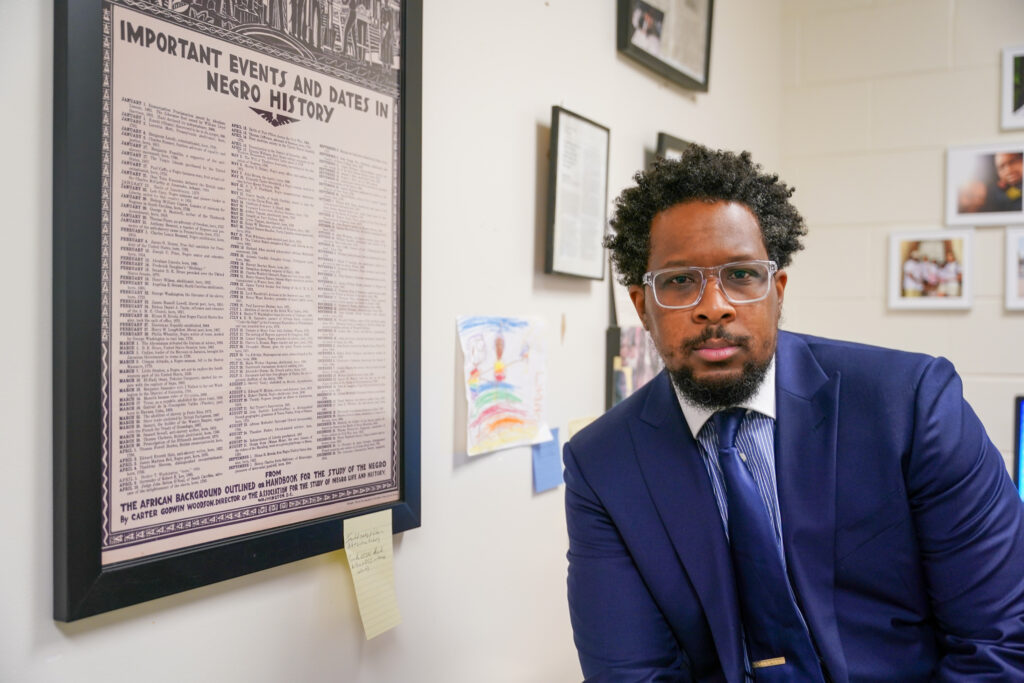
Rann Miller poses for a photograph in his office at Camden Promise Charter School in Camden, New Jersey, October 27, 2021. Miller is the head of Diversity, Equity and Inclusion for his Camden charter school district, and is reshaping curriculum to include important perspectives from the BIPOC community once left out.
BY RANN MILLER | AC JosepH Media
Last week, Donald Trump signed a new executive order: Restoring Truth and Sanity to American History, which says:
“Once widely respected as a symbol of American excellence and a global icon of cultural achievement, the Smithsonian Institution has, in recent years, come under the influence of a divisive, race-centered ideology. This shift has promoted narratives that portray American and Western values as inherently harmful and oppressive.”
The order names the Smithsonian American Art Museum’s exhibit, “The Shape of Power: Stories of Race and American Sculpture.” It represents that race is a social construct and that the United States used race to establish and maintain systems of power, privilege, and disenfranchisement.
It also names the National Museum of African American History and Culture (NMAAHC) for expressing that “hard work,” “individualism,” and “the nuclear family” are aspects of “White culture.”
The EO warns that if these institutions and others like them do not cease from expressing these ideas in their exhibits of words and artifacts, they’ll be defunded. For NMAAHC, they essentially have to cease being themselves: telling the truth of the African American experience in the United States in order to be funded.
I recently took my 10th grade AP U.S. History class to the museum—two weeks ago, in fact. If you’ve ever been, then you’ll remember how the concourse level is designed like a slave ship where you must work your way up through time to understand the strivings of African Americans during the period of enslavement, Reconstruction, Jim Crow, and the Neoliberal restructuring of America which includes the phenomenon of mass incarceration, economic precarity, voter disenfranchisement, post-industrialization and police brutality.
I’ve also had the pleasure of attending with my family on numerous occasions. It’s a very powerful experience: from seeing the shackles used to bind Africans together to the funeral procession of Emmett Till.
However, there is a very real possibility that the museum will shut down due to Trump’s executive order. Understandably so, there is outrage. I’ve seen it amongst my network of family and friends.
I’ve also seen it through educators and journalists, including Nikole Hannah-Jones.
I do not doubt that African Americans will fight this executive order. As we should. But the question now is one of strategy. A determination will be made as to whether a protest, boycott, or congressional hearing is necessary. Some of these tactics will likely take place. Perhaps a viable option is to send donations to the Smithsonian, which can help keep those doors open.
However, the option I encourage, as a student and teacher of Black history and American history, is that we, as African Americans, focus on lifting up our institutions and even creating new ones—institutions owned by, funded by, and led by African Americans—as we continue to fight for the NMAAHC.
If there was ever a time to have a FUBU (For Us By Us) mindset—shout out to Daymond John—it is now.
What did we do when NMAAHC didn’t exist?
I can tell you what I did. As a child, I visited the historical society of the nation’s first independent, self-governing, predominantly Black municipality north of the Mason-Dixon Line, Lawnside, New Jersey, which was incorporated in 1926.
I learned that the town was a stop on the Underground Railroad and that Peter Mott used his home as a safe haven for those seeking freedom. I also learned that Richard Allen, founder of Mother Bethel AME in Philadelphia, founded a church there—Mt. Pisgah AME.
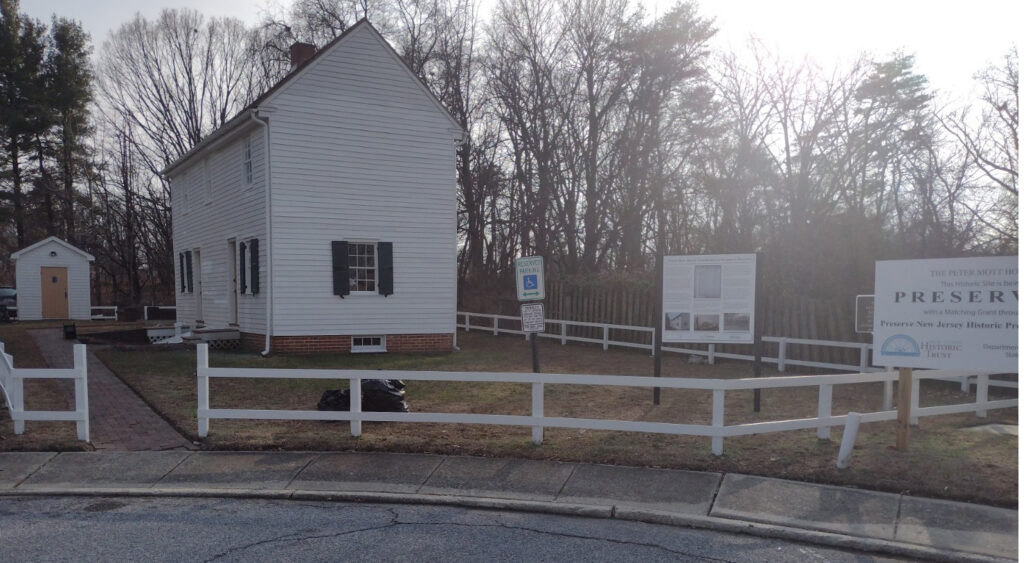
I also traveled to Baltimore and visited the Great Blacks in Wax Museum where I first saw what a slave ship looked like, where I saw the shackles, where I saw a facsimile of the Emancipation Proclamation, and where I stood next to wax figures of Dr. King, Harriet Tubman and el Hajj Malik el Shabazz.
I had the opportunity to visit LaUnique Bookstore & Cultural Arts Center in my hometown of Camden, where Mr. Larry Miles operates not only a Black bookstore but also maintains a museum featuring Black artifacts and art. I still purchase books there, but I also visit the museum as often as my schedule allows.
In college, I lamented that there was no library dedicated to Black history…that is, until I learned of Dr. Carter G. Woodson and the Association for the Study of African American Life and History.
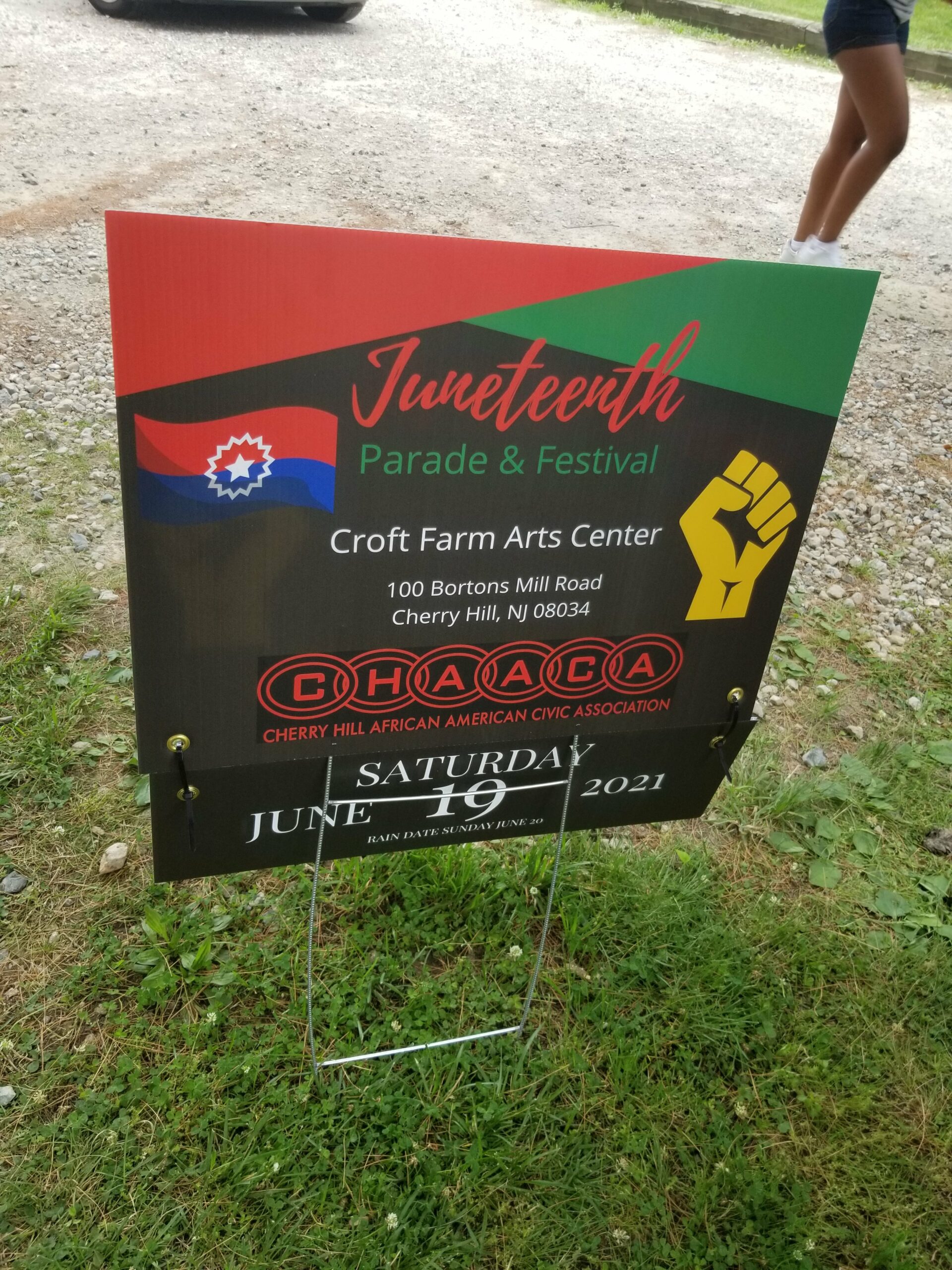
To this day, I utilize Woodson’s scholarship and that of others to learn from and teach history. Before my wife and I got married, we visited Florida A&M’s Black History Archive, where we learned even more about Blackface, minstrel shows, and how these images became an integral part of popular advertisements and cartoons.
See, we’ve always had our own institutions—Black-funded, Black-owned, and Black-led; before the Smithsonian decided it was time to create a museum for Black history. In the same way, Black people didn’t need a law signed by Joe Biden to celebrate Juneteenth.
We’ve never needed the social structure to tell us who we are and who we are to each other. They know, which is why historically, they’ve attempted to withhold, if not erase, memory of our history.
Make no mistake; any recognition of our history by the social structure was an act of concession or compulsion. Abraham Lincoln didn’t “free” African Americans out of the kindness of his heart. He did it because he was forced to by Black people who left the plantation to join the army and fight their masters.
The Supreme Court didn’t rule the way it did in the Brown case because Thurgood Marshall’s arguments were righteous. They did so due to what Derrick Bell calls interest convergence: Cold War aims compelled the government to grant us rights.
That we historically cannot depend on the social structure has led us to create institutions, as Dr. Greg Carr of Howard University shared, because individuals cannot beat institutions, but other institutions can.
Fight for NMAAHC. Fight for the Black history institutions maintained by the states and local municipalities.
However, at the same time, we must uplift our institutions. Take your children, classes, and community to the Black history museums and libraries in your local area. If there is a gap in our memory, let us work to create new institutions to fill those gaps.
Institutions like the 1838 Black Metropolis, whose work focuses on Black history in Philadelphia and South Jersey. Let’s uplift the work of its talented and highly skilled founders, Morgan Lloyd and Michiko Quinones. Let us support these institutions with our time, talent, and tokens. Let’s realize that we can walk and chew gum at the same time.
So, let’s do so.
BIO: Rann Miller is a writer, author, and educator. A graduate of Rutgers, the State University of New Jersey, Rann teaches AP United States History, is the author of Resistance Stories from Black History for Kids, and is an opinion columnist, featured in various news outlets exploring the intersections of race, education, politics, culture and history. You can follow on “X” @RealRannMiller, on IG, and TikTok @realrannmiller.
Follow Us Today On:
Note from AC JosepH Media: If you like this story and others posted on Front Runner New Jersey.com, lend us a hand so we can keep producing articles like these for New Jersey and the world to see. Click on SUPPORT FRNJ and make a contribution that will go directly in making more stories like this available. Thank you for reading!
